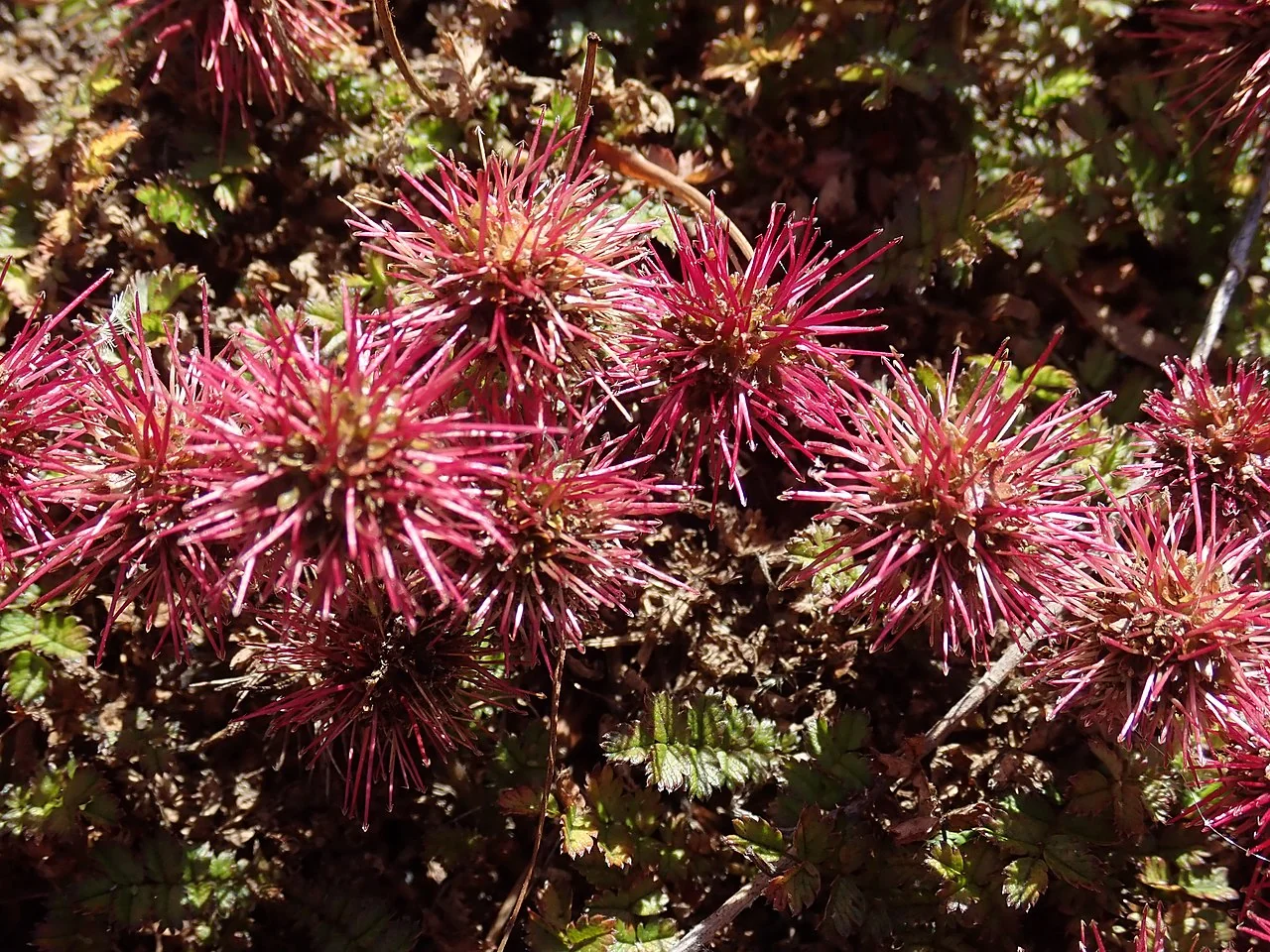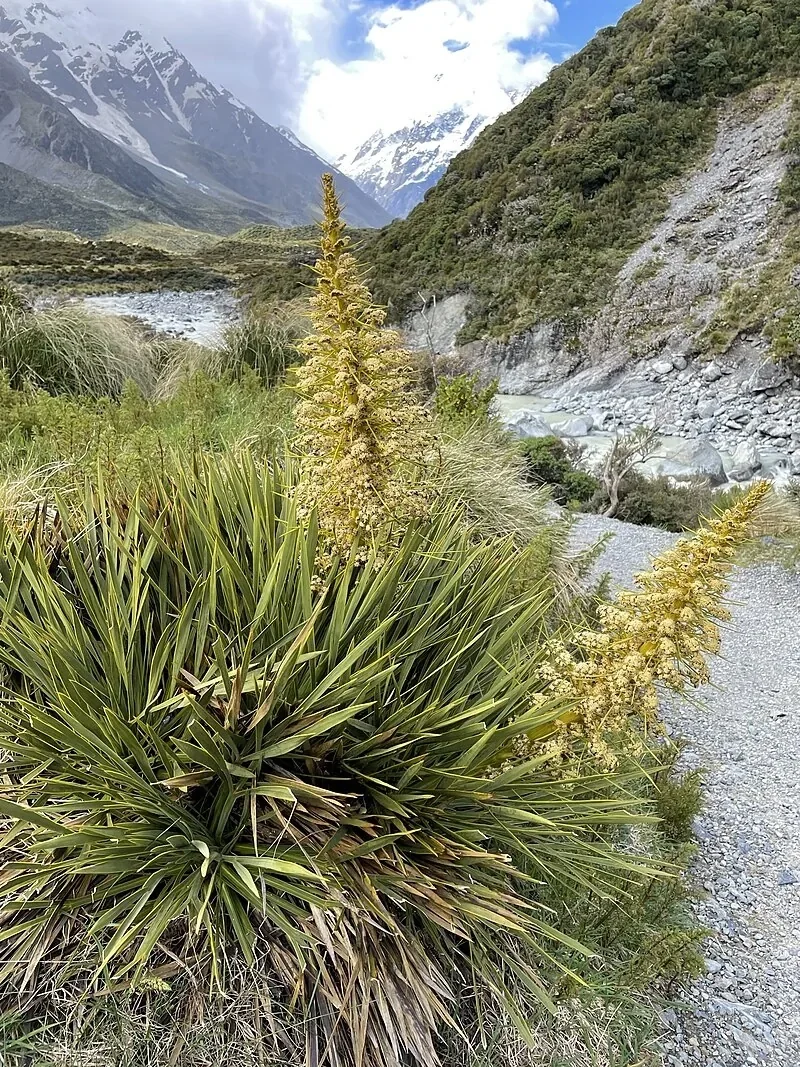
Rārahu
Pteridium esculentum
A vigorous, colonising fern of open sites and disturbed ground across New Zealand. Useful as a pioneer cover but can spread aggressively without management. Learn more in our native plants guide .

Plant Description
Botanical Features
Rārahu ( Pteridium esculentum ), commonly known as bracken fern or Austral bracken, is a species of the bracken genus native to various countries in the Southern Hemisphere, including Australia, New Zealand, Norfolk Island, Malaysia, Polynesia, and New Caledonia. It is a robust, leathery fern that grows from creeping rhizomes, which are covered with reddish hair. The fronds are typically large, roughly triangular, and can grow to 0.5-2 meters tall, though some can reach up to 9 meters. They are stiff with a brown stripe, dark green on the upper surface, and paler beneath. The fronds are 3-4-pinnate at the base, meaning they are divided multiple times into leaflets. The undersurface often has fine white hairs and minute gnarled trichomes, giving it a farinaceous or mealy appearance. The rhizomes are long-creeping, subterranean stems that can be 2-10 mm in diameter and are densely covered with dark, red-brown hairs. The stipes (stalks) are woody, grooved, and can be 0.2-2.0 meters long and 3-15 mm in diameter. They are chestnut brown at the base and yellow-brown to russet at the apex. Rārahu reproduces via spores, which are dark yellow to orange-yellow and granulose. The sori (spore-producing structures) are almost continuous along the margins of the ultimate segments and are protected by an inrolled lamina margin.
Quick Facts
Overview
| Scientific Name | Pteridium Esculentum |
|---|---|
| Height | 0.6-2 m |
| Spread | Forms extensive colonies |
| Growth Rate | Fast |
| Light | Full sun to light shade |
| Water Needs | Low-moderate; drought-tolerant once established |
| Frost | Good |
| Frost Tolerance | Hardy once established |
| Salt Tolerance | Low; requires protection from salt exposure |
| Lifespan | Long-lived perennial |
Climate Best Suited to
Regional climate suitability across major New Zealand cities.
Regional Suitability
| Whangārei | Ideal |
| Auckland | Ideal |
| Hamilton | Suitable |
| Rotorua | Suitable |
| Tauranga | Ideal |
| Gisborne | Ideal |
| New Plymouth | Ideal |
| Whanganui | Ideal |
| Palmerston North | Suitable |
| Napier | Ideal |
| Wellington | Ideal |
| Nelson | Ideal |
| Christchurch | Suitable |
| Dunedin | Suitable |
| Invercargill | Suitable |
| City | Climate Suitability |
|---|
Natural Habitat
Rārahu ( Pteridium esculentum ), commonly known as bracken fern or Austral bracken, is a highly adaptable fern native to various countries in the Southern Hemisphere, including New Zealand. It is found throughout both the North and South Islands, from coastal areas to montane sites up to 1000 meters in altitude.
Key Habitats Include:
- Disturbed Areas: This species is highly adaptable and thrives in disturbed areas, often aggressively invading cleared or burnt land. It forms extensive populations through its underground rhizomes.
- Open Sites: It is commonly found in rough and reverting pasture, road cuttings and banks, ditches, lake and forest margins, peat bogs, old sand dunes, cliff faces, forest clearings, and disturbed ground.
- Riparian Zones: Rārahu can also be found along river beds and terraces.
- Tussock Land: It is a component of tussock land ecosystems.
Preferred Conditions:
- Soil: It can tolerate a wide range of soil conditions, including damp sandy areas.
- Light: It prefers full sun to light shade, making it versatile for various light exposures within its habitat.
In New Zealand, it is common in seral habitats, ranging from the coast to the low alpine zone. Its ability to colonize and thrive in such diverse and often challenging environments underscores its ecological importance as a pioneer species and its role in contributing to the biodiversity and structural complexity of New Zealand's natural landscapes.
Plant Conservation
Conservation
Pteridium esculentum , commonly known as bracken fern or Austral bracken, is a widespread fern species found in the Southern Hemisphere, including New Zealand. While it was historically a staple food for Māori and Indigenous Australians, it contains ptaquiloside, a known carcinogen, which can be toxic to animals and potentially humans. Despite its historical use as a food source, Pteridium esculentum is generally not a plant of conservation concern in terms of its survival as a species. In fact, it is often considered a troublesome weed due to its invasive nature and ability to colonize disturbed areas rapidly, outcompeting other plants and forming dense understories. In New Zealand, its conservation status is listed as "Not Threatened." Conservation efforts related to Pteridium esculentum often focus on its management and control rather than its protection, especially in agricultural and forestry contexts where it can be problematic. While it can be a persistent, fire-prone, low-diversity cover in drier regions, Pteridium esculentum is also an indigenous plant that can prevent erosion and, in wetter areas, suppress exotic grasses and facilitate forest regeneration. It is also considered an essential component of landscapes conserved for their historical significance to Māori.
Growing Requirements
Soil
Well-drained, moderately fertile soils; avoid prolonged waterlogging.
Light
Performs in full sun to partial shade depending on species.
Water
Keep evenly moist while establishing; reduce irrigation as roots develop.
Temperature
Hardy in most regions of Aotearoa once established.
For Rārahu ( Pteridium esculentum ), choose a site with full sun to light shade and soil that is well-drained, moisture-retentive. Incorporate composted organic matter to improve structure and drainage. Plant with the crown or root collar at soil level, then apply a 5-8â¯cm mulch to moderate temperature, conserve moisture, and suppress weeds. Protect young plants from extremes while establishing and consider the stated frost tolerance (seasonal) when siting near exposure or cold air drains.
Planting Guide
Best Planting Practices
Bracken thrives on a wide range of free-draining soils in full sun to light shade. For intentional plantings, contain rhizomes with root barriers or raised beds to manage spread.
- Soil: Sandy to loamy; avoid waterlogged ground.
- Containment: Install 30-40 cm deep barriers where spread is a concern.
- Water: Low once established; water only to establish.
Ecosystem Notes
- Pioneer cover: Rapid soil stabilisation and shading of bare soils.
- Rhizome network: Resilient to disturbance; can suppress tree recruitment without management.
- Fauna: Shelter for invertebrates and ground-nesting birds in open country.
Uses and Significance
Garden and Restoration
A vigorous, colonising fern of open sites and disturbed ground across New Zealand. Useful as a pioneer cover but can spread aggressively without management.
- Soil stabilisation on disturbed sites
- Early-successional cover (manage spread)
Propagate Rārahu by division of established clumps in cool, moist conditions or by spores raised in sterile medium with bottom heat. Keep humidity high and air movement gentle to limit fungal issues while young fronds harden.
Landscaping Ideas
- Naturalistic meadows: Use in controlled patches for a wild, seasonal effect.
- Reclamation: Quick green cover on poor, disturbed soils.
- Contrast: Pair with coarse grasses and native daisies; manage edges.
Seasonal Care Calendar
Spring
- Plant and mulch
- Protect new growth from weeds
Summer
- Deep watering in drought
- Monitor pests
Autumn
- Light formative pruning
- Top up mulch
Winter
- Plant eco-sourced stock
- Stake in windy sites
Pruning and Maintenance
Techniques and Timing
Generally minimal; formative work when young and removal of damaged wood.
Prune Rārahu lightly to maintain structure; remove damaged shoots and avoid hard cuts on older wood.
How to Grow Rārahu
Rārahu ( Pteridium esculentum ), commonly known as Bracken Fern, is a vigorous, rhizomatous fern native to open forests, shrublands, and disturbed sites across New Zealand. This resilient fern is a pioneer species, quickly colonizing bare ground and playing a crucial role in ecological succession. While it can spread aggressively in gardens without containment, its hardiness and ability to thrive in challenging conditions make it valuable for large-scale restoration projects and erosion control. Understanding its propagation methods is key to managing its growth and utilizing its ecological benefits effectively.
From Rhizome Sections
Propagating Rārahu from rhizome sections is the easiest and most effective method, especially for establishing new colonies or managing its spread. In late winter to early spring, carefully lift a section of rhizome (the underground stem) that has several viable buds. Cut 10-15 cm pieces, ensuring each section has at least one healthy bud, and plant them horizontally 3-5 cm deep in a free-draining, humus-rich medium. Keep the medium evenly moist and warm, providing bright, indirect light. New fronds typically emerge within weeks as the buds break. For containment in garden settings, plant rhizomes within a large buried container or behind a root barrier to prevent unwanted spread. This method allows for rapid establishment and ensures genetic consistency with the parent plant.
From Spores
Propagating Rārahu from spores is a more technical but equally viable method, particularly for generating a large number of plants or for conservation purposes. Collect ripe fertile fronds when the sporangia (spore cases) on the undersides of the fronds darken and are ready to release spores. Sow the spores onto the surface of a sterilized, fine medium, without covering them, and maintain sealed humidity in low light at temperatures between 18-22 °C. After the green prothallus stage, maintain gentle, constant moisture until sporophytes (tiny true fronds) appear. Carefully prick out the tiny sporophytes and grow them in shaded and humid conditions before potting them individually. This method requires patience and a sterile environment to prevent contamination.
Pests and Diseases
Common Problems and Solutions
- Few pests: Generally trouble-free; occasional chewing insects are cosmetic.
- Invasiveness: Main issue is rhizome spread; contain physically or by regular cutting.
- Fungal spots: Improve airflow; avoid overhead watering in shade.
Cultural Significance
Cultural Importance
Rarauhe / Aruhe
Bracken rhizomes (aruhe) were historically processed as a staple carbohydrate in parts of Aotearoa and remain an important part of cultural history and archaeological landscapes.
Pteridium esculentum , also known as bracken fern or Austral bracken, holds significant cultural importance, particularly for the Māori people of New Zealand and Indigenous Australians. Its rhizome (underground stem), called aruhe in Māori, was a primary carbohydrate, especially in areas where traditional Pacific crops like kūmara (sweet potato) could not be grown. Aruhe was particularly important for hunting or exploring groups away from permanent settlements. The widespread distribution of this species in modern-day New Zealand is partly a result of prehistoric deforestation and the tending of aruhe stands by Māori on rich soils to produce the best rhizomes. Beyond food, bracken root was also valued for its medicinal properties. The silica structures in Pteridium esculentum could, over time, grind down teeth, a finding observed in many Māori archaeological sites. The fern's dominance in native bush and its importance as food and medicine also led to its common use as a design element in traditional Māori carving, with the koru (a spiral shape often derived from the unfurling fern frond) being a prominent example. For Indigenous Australians, the rhizome of Pteridium esculentum was also a traditional food source. Historically, bracken became one of the most abundant plants in New Zealand after the arrival of Māori in the 13th century, following extensive deforestation. The bracken-dominated vegetation that emerged after burning eventually led to fire-maintained mosaics where bracken thrived in deeper soils and moist, mild climates.
Bonus Tip
Expert Growing Advice
To effectively manage and weaken unwanted patches of Rārahu without significant soil disturbance, repeatedly cut its fronds at ground level throughout the growing season. This method gradually depletes the energy reserves in its rhizomes, eventually starving the plant and reducing its spread over time.







